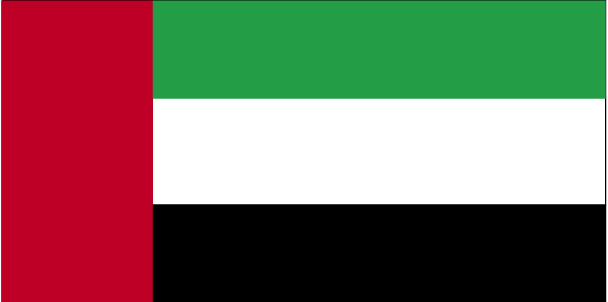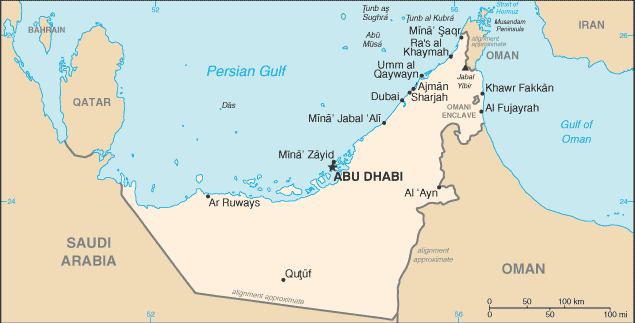|
United Arab Emirates
|

|
Capital: Abu Dhabi
Population: 9,770,529
Brief History of United Arab Emirates:
In the year 630 AD, envoys from Muhammad arrived to the area of the United Arab Emirates and much of the area was converted to Islam. The non-Muslims were defeated at Dibba in a major battle of the Ridda wars.
In the early 16th century the Portuguese arrived. They controlled much of the coast for around 150 years. After that the coast became an area where pirates would hide out and attack the shipping industry. The British got involved with the local sheikhs, called the Trucial Sheikhdoms and signed a treaty with them where the British navy would patrol the waters.
In 1971, six of the sheikhdoms joined together to form the United Arab Emirates. They were Abu Zaby, Ajman, Al Fujayrah, Ash Shariqah, Dubayy, and Umm al Qaywayn. In 1972 a seventh state, Ra's al Khaymah also joined. The country is sometimes called the UAE. It has done well economically due to oil revenues.
The Geography of United Arab Emirates
Total Size: 82,880 square km
Size Comparison: slightly smaller than Maine
Geographical Coordinates: 24 00 N, 54 00 E
World Region or Continent: Middle East
General Terrain: flat, barren coastal plain merging into rolling sand dunes of vast desert wasteland; mountains in east
Geographical Low Point: Persian Gulf 0 m
Geographical High Point: Jabal Yibir 1,527 m
Climate: desert; cooler in eastern mountains
Major cities: ABU DHABI (capital) 666,000 (2009)
The People of United Arab Emirates
Type of Government: federation with specified powers delegated to the UAE federal government and other powers reserved to member emirates
Languages Spoken: Arabic (official), Persian, English, Hindi, Urdu
Independence: 2 December 1971 (from UK)
National Holiday: Independence Day, 2 December (1971)
Nationality: Emirati(s)
Religions: Muslim 96% (Shi'a 16%), Christian, Hindu, and other 4%
National Symbol: golden falcon
National Anthem or Song: Nashid al-watani al-imarati (National Anthem of the UAE)
Economy of United Arab Emirates
Major Industries: petroleum and petrochemicals; fishing, aluminum, cement, fertilizers, commercial ship repair, construction materials, some boat building, handicrafts, textiles
Agricultural Products: dates, vegetables, watermelons; poultry, eggs, dairy products; fish
Natural Resources: petroleum, natural gas
Major Exports: crude oil 45%, natural gas, reexports, dried fish, dates
Major Imports: machinery and transport equipment, chemicals, food
Currency: Emirati dirham (AED)
National GDP: $256,500,000,000
** Source for population (2012 est.) and GDP (2011 est.) is CIA World Factbook.
Back to Geography Home Page
